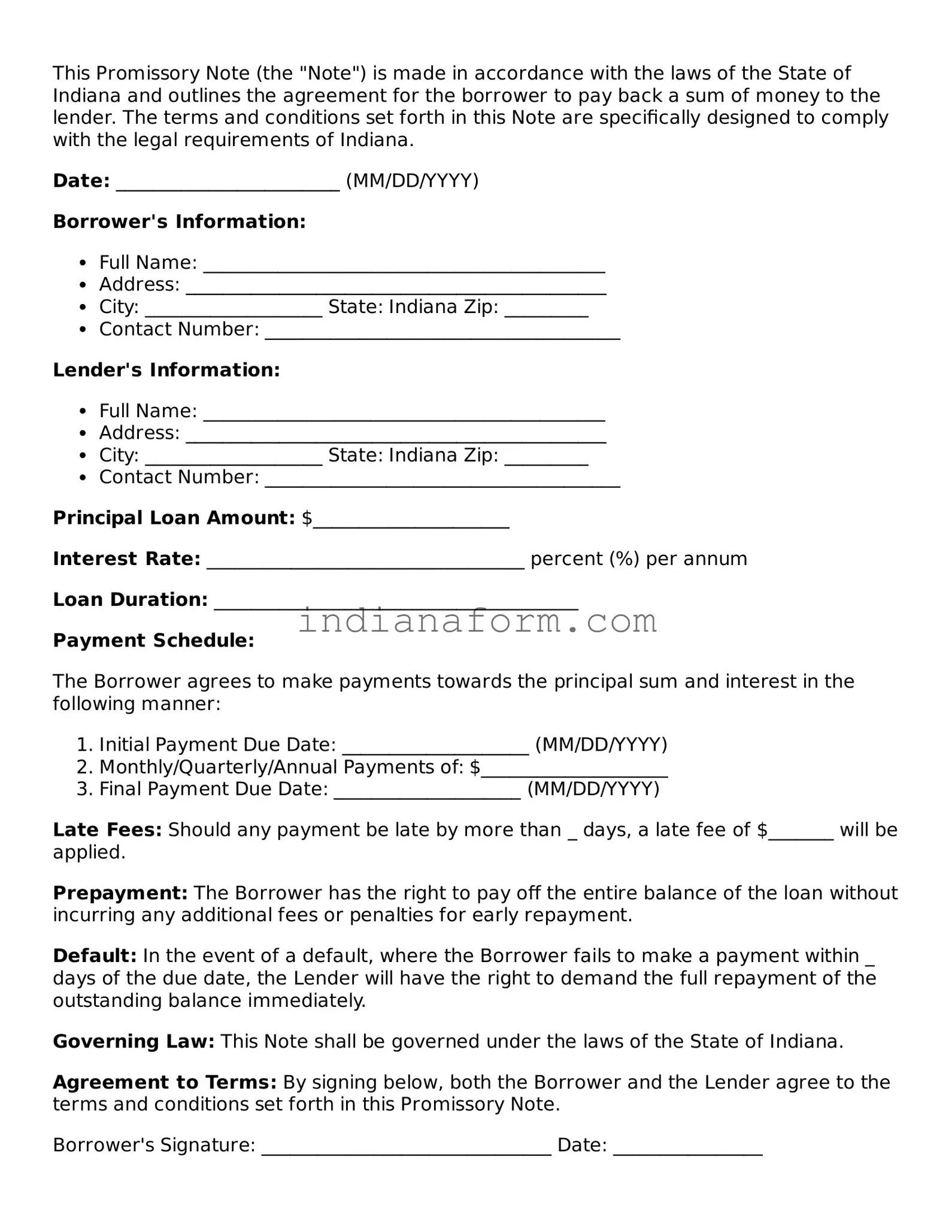What is a Promissory Note in Indiana?
A Promissory Note in Indiana is a legal document that outlines a loan agreement between two parties, typically a lender and a borrower. It specifies the amount of money borrowed, the interest rate, and the repayment plan. This document serves as a formal commitment from the borrower to repay the loan under the terms agreed upon.
Who needs to sign the Indiana Promissory Note?
The Indiana Promissory Note must be signed by the borrower and the lender. In some cases, a co-signer may also be required to sign, especially if the borrower has a limited credit history or income. The signatures formally bind all parties to the terms of the note.
Is a witness or notarization required for an Indiana Promissory Note?
While not always required, having a witness or notarization can add a layer of legal protection and authenticity to the note. It may vary depending on the amount loaned and the preference of the parties involved. For larger loans or more formal agreements, notarization is recommended to ensure the note's enforceability.
What happens if the borrower does not repay the loan as agreed in the Promissory Note in Indiana?
If the borrower fails to repay the loan according to the terms set in the Promissory Note, the lender has the right to pursue legal action to recover the owed amount. This may include filing a lawsuit to seek repayment or initiating foreclosure proceedings if the loan is secured by collateral.
Can you modify an Indiana Promissory Note after it’s been signed?
Yes, an Indiana Promissory Note can be modified after it's been signed, but any changes must be agreed upon by all parties involved. The modifications should be made in writing, and the document should be signed again by the borrower, the lender, and any co-signers to ensure that the new terms are enforceable.
Are there different types of Promissory Notes in Indiana?
Yes, there are mainly two types of Promissory Notes in Indiana: secured and unsecured. A secured promissory note is backed by collateral, such as real estate or a vehicle, which the lender can claim if the borrower defaults on the loan. An unsecured promissory note does not involve collateral, which poses a higher risk to the lender.
How is the interest rate determined for a Promissory Note in Indiana?
The interest rate on a Promissory Note in Indiana is agreed upon by the borrower and the lender at the time of the loan's origination. It must comply with Indiana's usury laws, which cap the maximum interest rate that can be charged on loans to prevent unlawful or excessive interest rates.
Does a Promissory Note need to be filed or registered with any government body in Indiana?
No, a Promissory Note in Indiana does not need to be filed or registered with a government body. However, maintaining copies of the signed and dated document is crucial for both parties for record-keeping and in case of any future disputes.
What should you do if you lose your original Indiana Promissory Note?
If the original Indiana Promissory Note is lost, it’s important to contact all parties involved immediately. You may draft a new note to be signed as a replacement, or create a written and signed statement detailing the loss and affirming the terms of the original note to maintain the agreement's validity.
